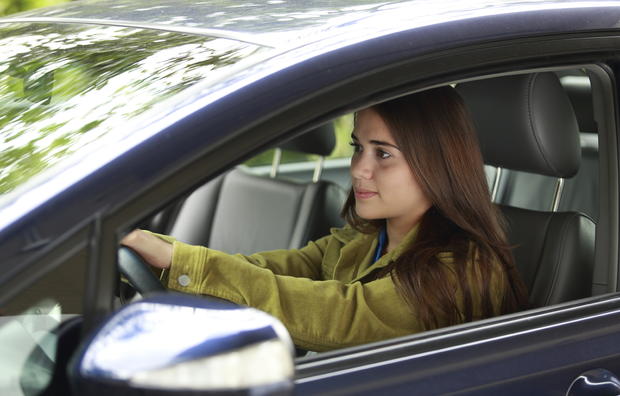Hazardous mix: Teens, cars and apps
Lauren, a 16-year-old teenager who had just learned to drive, is a firm believer that no good deed goes unpunished.
She was in a car with one of her girlfriends, who was motoring down a North Dakota highway, when the driver suddenly pulled out her smart phone and logged onto an "app." For those of us who are technology impaired, that's short for "application," a small program or game that can be downloaded onto a mobile device.
So Lauren did what any good friend would do. She snatched the phone away from the driver before she could have an accident. But in the process her girlfriend lost control of the car, swerved into the opposite lane, and nearly had a head-on collision with an oncoming vehicle.
Lauren and her friend came within a few feet of becoming a statistic.
"Motor vehicle crashes are the leading cause of death among 15- to 20-year-olds," said Loretta Worters, a spokeswoman for the Insurance Information Institute, which represents auto insurers. Nearly 1,700 teens die in auto accidents each year, and adding a teenager to your policy increases your cost by anywhere from 65 percent to 100 percent or more.
Many young drives die simply because they weren't watching the road. A recent report by SADD (now known as Students Against Destructive Decisions) and Liberty Mutual Insurance showed that while 27 percent of teens still report texting and driving, two out of three admit to using apps while behind the wheel -- an even bigger concern.
The lure of apps represents "a new danger among teens and a new worry for parents," according to the study.
Seventeen-year-old Dylan learned that first-hand recently when he was driving home from a New Jersey amusement park and saw a car going "extremely slow" in the left passing lane (Both Lauren, cited above, and Dylan are members of SADD, which asked that their full names not be used.) When he finally passed the car on the right, he saw that the driver, oblivious to the traffic behind him, was playing Pokémon GO.
The road perils for the nation's youngest drivers are morphing as fast as the villains in their video games. SADD once stood for Students Against Driving Drunk. But it was changed to "Destructive Decisions" in 1997 to include drugs, more frequently abused now, and distractions such as cell phones, the internet and fellow teens in the car, as well as out-of-car bad experiences such as bullying, sexually transmitted diseases and suicidal impulses.
Quickly rising to the top of the list, at least where driving is concerned, is the ever-present app. Yes, adults use them too, and they can be of great value if you're not behind the wheel or the car isn't in motion.
But for teens it's especially dangerous. And it's not because they're stupid, said Dr. Gene Beresin, a professor of psychiatry at Harvard University. In fact, in many cases they're smarter than adults. "They are digital natives," he said. "They live in this world, and they think they can do it all -- at the same time."
A typical case: the Georgia teen who allegedly rear-ended another driver with her Mercedes at 100 miles per hour while using Snapchat.
Carried away on a stretcher in a neck brace, the 19-year-old was able to post another picture of herself that she captioned, "Lucky to be alive." Her victim, less lucky, suffered traumatic brain injuries.
The first problem is that while teens are smart about some things, they don't have neurologically adult brains until their mid-20s, which is why most car insurance companies don't lower their rates until then. "They react emotionally and impulsively," Beresin said.
Beresin uses an "implicit association test" to prove how differently teenagers think. Teens may say they don't text or use apps behind the wheel, but show them a video of someone doing it and they see nothing wrong. And it's those feelings, not what they say, that drive their behavior -- literally.
The second, and less surprising, problem is that teens don't always tell the truth about what they are doing, particularly to their parents. "Kids will say what they think their parents want to hear," Beresin said.
So if 27 percent of teens admit to texting behind the wheel, the real number could be a lot higher. A Centers for Disease Control and Prevention study showed that 41 percent of teens emailed while driving at least once within the last 30 days.
Now what can you do about the combustible mix of teens, apps and cars? Here are some ideas from SADD:
Use the app before you drive. Program your music and check out how to get where you're going before you turn on the car. And pull over if you have to check directions.
Then hide the phone. Most of us -- adults included -- keep the phone nearby. If so, turn off the sound or give your phone to another person in the car.
Most important, have a conversation with your teen driver about what goes on in the car. Instead of a lecture on apps and texting, ask open-ended questions designed to find out how they really feel.
But perhaps the best way to find out is to drive with them, and watch what happens when the phone summons them.
